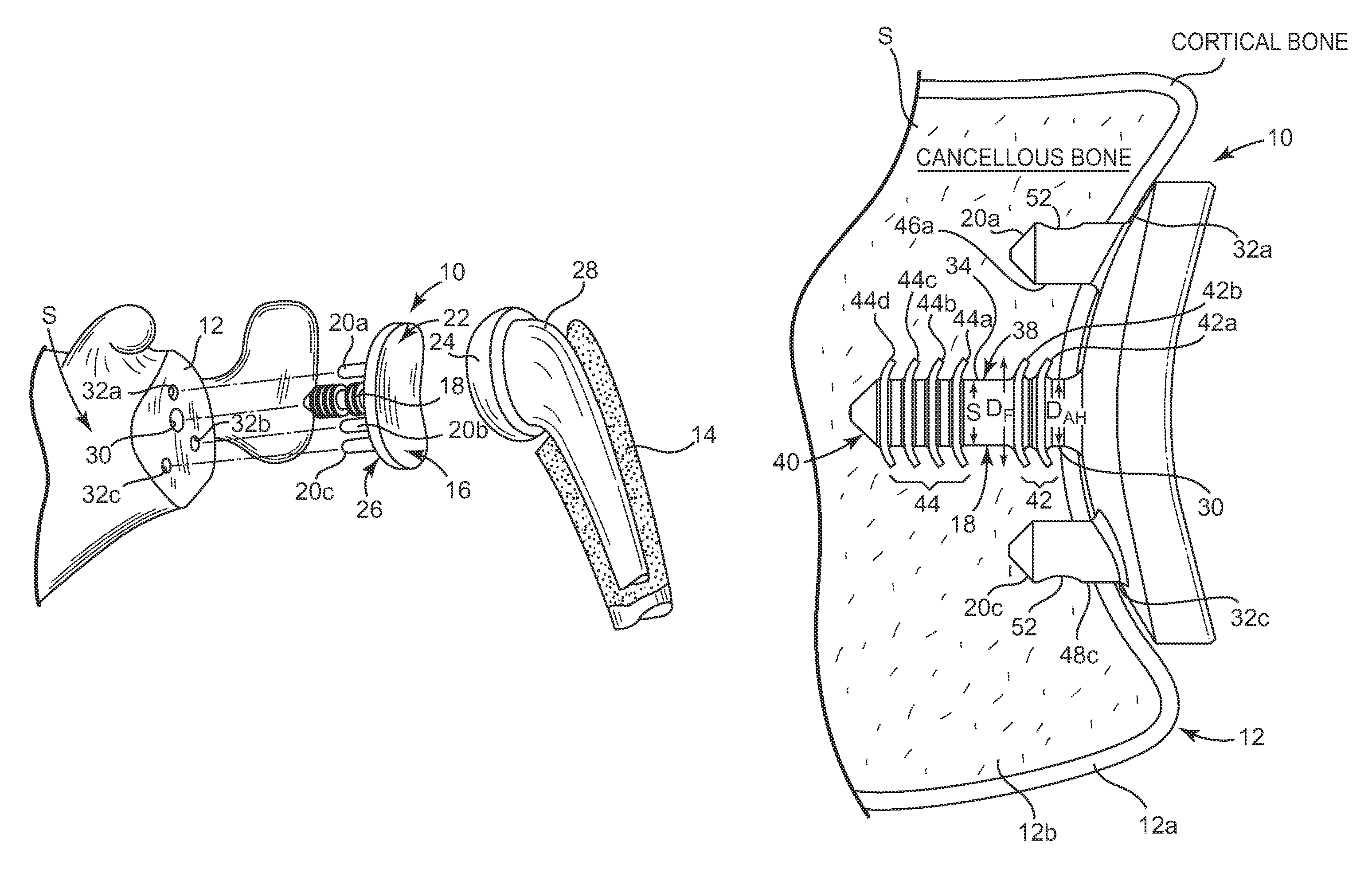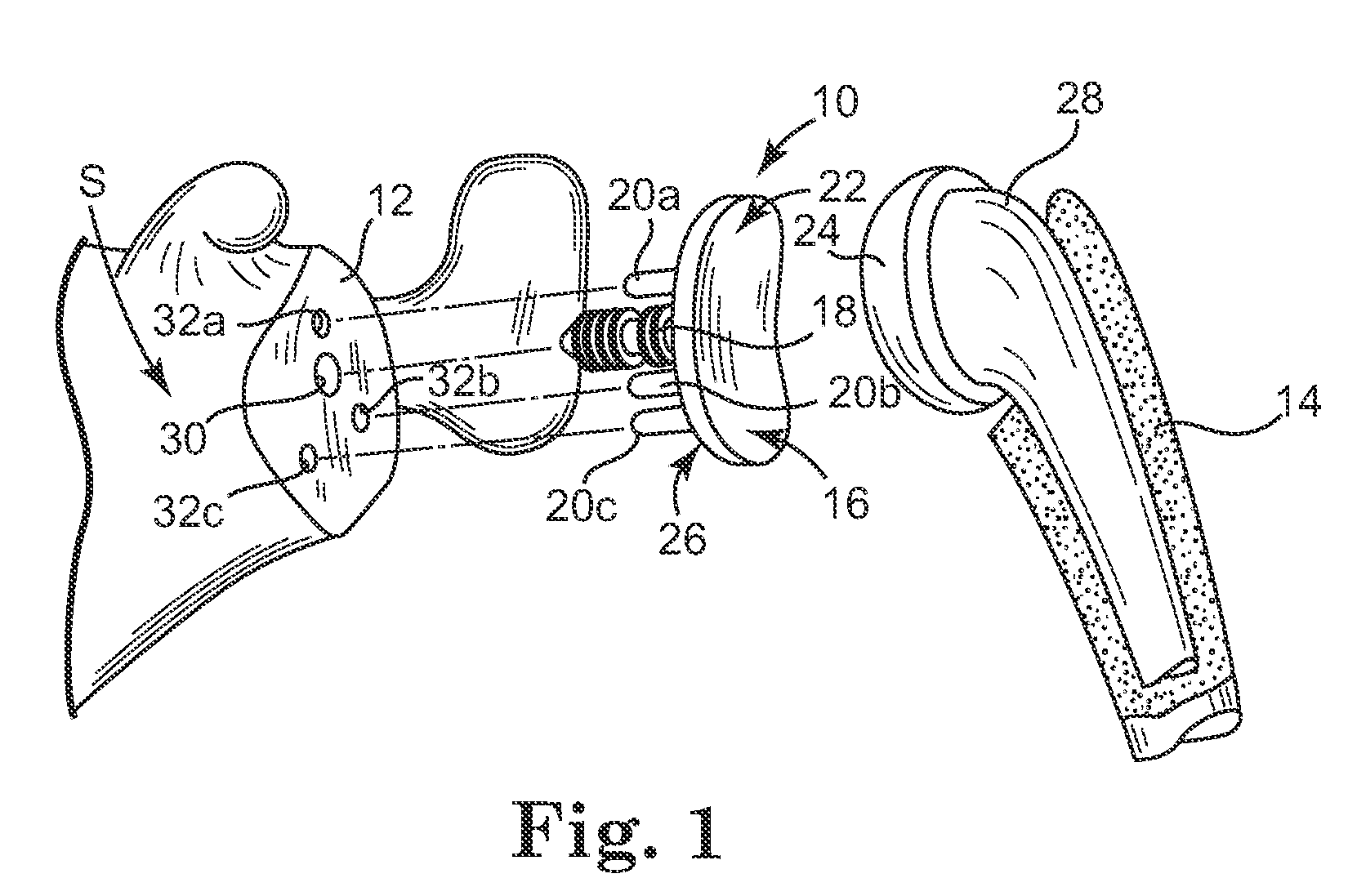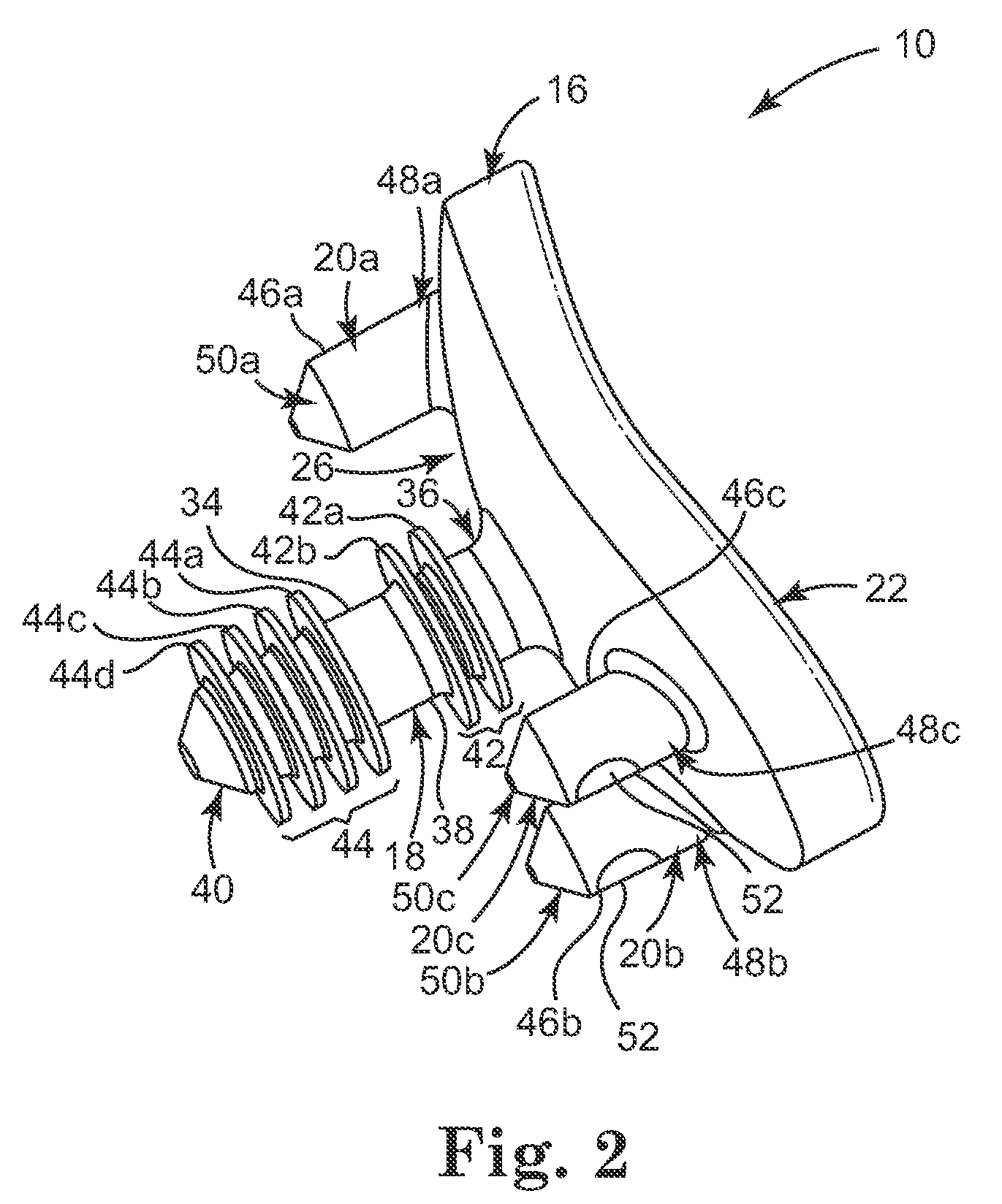Glenoid implant anchor post
a technology of glenoid and humerus, which is applied in the field of glenoid implant anchor posts, can solve the problems of requiring repair or replacement, affecting the interaction between the glenoid and the humerus, and assembly failure, and achieves the effect of convenient customization
- Summary
- Abstract
- Description
- Claims
- Application Information
AI Technical Summary
Benefits of technology
Problems solved by technology
Method used
Image
Examples
example 1
[0072]FIG. 11 illustrates the load versus displacement of a glenoid component of the present invention and the load versus displacement of a comparative glenoid component during insertion into a foam structure designed to exhibit similar density properties of a scapula. The foam structure included an anchor hole for accepting an anchor of the glenoid component of the present invention and an anchor of the comparative glenoid component.
[0073]The glenoid component of the present invention included an anchor having a set of four distal fins extending from a distal end of the anchor and a set of two proximal fins extending from a proximal end of the anchor. The set of distal fins and the set of proximal fins are separated by a middle section of the anchor, such as illustrated in FIG. 2. The set of proximal fins were offset from a rear surface of the head portion by about 2.5 millimeters.
[0074]The comparative glenoid component was substantially similar to the glenoid component o...
example 2
Removal
[0078]FIG. 12 illustrates the load versus displacement of the glenoid component of the present invention and the load versus displacement of the comparative glenoid component during removal from the foam structure.
[0079]As can be seen in FIG. 12, the initial force required to pull the glenoid component of the present invention out from the foam structure spiked to about 39 pounds in the first millimeter of displacement, followed immediately by a spike of about 43.5 pounds at about 2 millimeters of displacement. In particular, a force of about 39 pounds was required to pull the first proximal fin through the anchor hole and a force of about 43.5 pounds was required to pull the second proximal fin through the anchor hole. These spikes all occurred within about 2 millimeters of displacement of the glenoid component of the present invention.
[0080]By contrast, the initial force required to move the comparative glenoid component relative to the foam structure increased more gradual...
PUM
 Login to View More
Login to View More Abstract
Description
Claims
Application Information
 Login to View More
Login to View More - R&D
- Intellectual Property
- Life Sciences
- Materials
- Tech Scout
- Unparalleled Data Quality
- Higher Quality Content
- 60% Fewer Hallucinations
Browse by: Latest US Patents, China's latest patents, Technical Efficacy Thesaurus, Application Domain, Technology Topic, Popular Technical Reports.
© 2025 PatSnap. All rights reserved.Legal|Privacy policy|Modern Slavery Act Transparency Statement|Sitemap|About US| Contact US: help@patsnap.com



